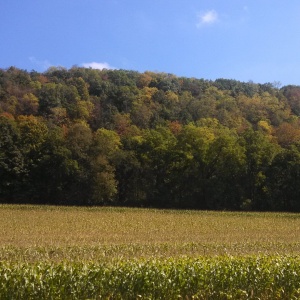
FCRN member Ben Phalan of the Universidade Federal da Bahia has written a paper discussing the strengths and limitations of the land sparing-sharing framework, which aims to allocate land use and production intensity so as to maximise the value of land for wildlife while still producing enough food for people. He notes that most studies show that wildlife would be favoured by producing food intensely on as little land as possible, and addresses some common criticisms of the model.
Abstract
The land sparing-sharing model provides a powerful heuristic and analytical framework for understanding the potential of agricultural landscapes to support wild species. However, its conceptual and analytical strengths and limitations remain widely contested or misunderstood. Here, I review what inferences can and cannot be derived from the framework, and discuss eight specific points of contention and confusion. The land sparing-sharing framework is underpinned by an ethic that seeks to minimise harm to non-human species. It is used to quantify how good farmland is for different species, in relation to appropriate reference land uses, and at what opportunity cost. The results of empirical studies that have used the model indicate that most species will have larger populations if food is produced on as small an area as possible, while sparing as large an area of native vegetation as possible. The potential benefits of land sharing or intermediate strategies for wild species are more limited. I review disagreements about the scope of analysis (food production cf. food security), the value of high-yield farmland for wildlife, the (ir)relevance of the Borlaug hypothesis, scale and heterogeneity, fostering human connections to nature, the prospects for land sparing in heavily-modified landscapes, the role of land sparing in improving connectivity, and the political implications of the model. Interpreted alongside insights from social, political and economic studies, the model can help us to understand how decisions about land-use will affect the persistence of wild species populations into the future.
Reference
Phalan, B.T., 2018. What Have We Learned from the Land Sparing-sharing Model?. Sustainability, 10(6), p.1760.
View the full paper here. See also the Foodsource building block What is land use and land use change? and the FCRN’s coverage of the papers Balancing farmland intensification and biodiversity and Land-use strategies to balance livestock production, biodiversity conservation and carbon storage in Yucatán, Mexico.
We will also shortly release a new Foodsource building block on the land-sparing vs. land-sharing framework.







Post a new comment »